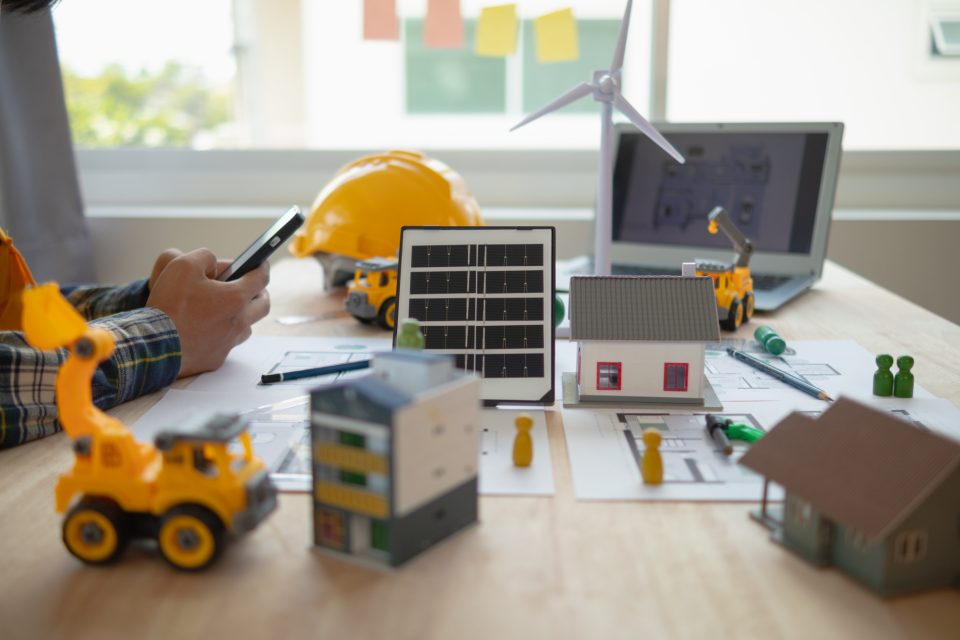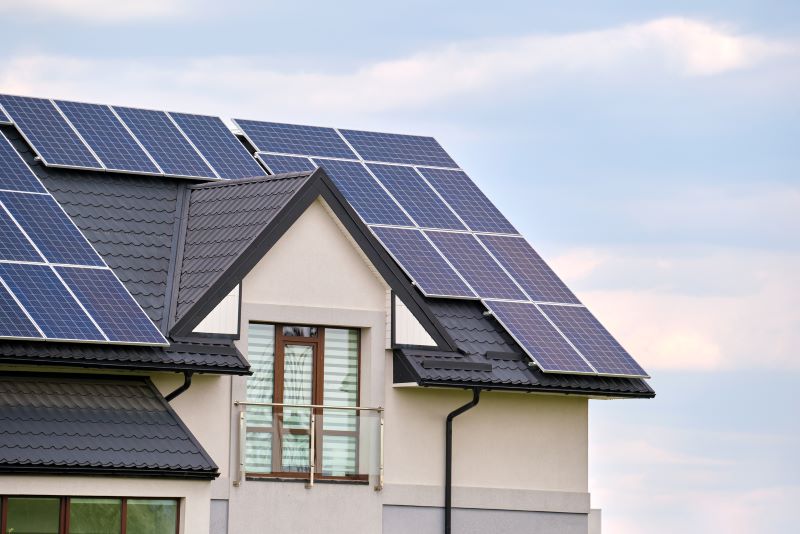The decision to switch to solar energy involves various factors, with cost being one of the most significant considerations for homeowners. The initial investment for a home solar system can vary widely depending on several factors, including the size of the system, the type of panels used, installation charges, and potential incentives and rebates.
This article delves into how much a home solar system costs. Read on to learn more.

Understanding Solar System Costs
When considering installing a home solar system, it’s crucial to understand the components contributing to the overall cost. The primary expense in a solar installation is the solar panels themselves. The price of these panels is determined by their capacity, measured in watts, and the technology used. Monocrystalline panels are usually more expensive than polycrystalline panels due to their higher efficiency and longevity.
Therefore, for those interested in specific regional data, such as the solar costs in Oregon or similar locations, it’s essential to consult local resources and professionals for the most accurate and current information. This state-specific insight can help homeowners make informed decisions tailored to the unique solar market conditions of their locality.
Factors That Can Influence Solar System Costs
After understanding solar system costs, the next thing to do is to get familiar with some factors that can influence the overall expenses. These may include:
-
Installation And Additional Equipment
The financial outlay for installing a solar power system extends beyond merely purchasing solar panels. Installation costs can vary greatly, influenced by the architectural intricacies of the property and the solar system’s design. Homes with roofs not designed to bear the weight of solar panels might require structural enhancements, adding to the project’s cost.
Furthermore, integrating battery storage solutions to maintain energy autonomy during outages or for off-grid living can significantly increase expenses. Essential components like inverters, which play a crucial role in transforming the solar panels’ direct current (DC) output into usable alternating current (AC) for home appliances, and the mounting hardware required to affix the panels to the roof securely, contribute additional costs.
Each of these elements must be carefully considered and factored into the overall budget for a solar installation, ensuring the system isn’t only efficient but also aligned with the home’s structural and energy requirements.
-
Size
The dimension of a solar energy system, commonly quantified in kilowatts (kW), is a pivotal factor that directly influences its price tag. Opting for a larger setup capable of producing an increased amount of electricity requires the acquisition of more solar panels, thereby escalating the initial financial commitment. Nevertheless, it’s paramount for homeowners to meticulously assess their energy consumption patterns to tailor the size of the solar system to their specific needs. An oversized system might not yield additional benefits proportional to its cost. At the same time, an undersized one might not suffice in meeting the household’s energy demands, leading to potential gaps in energy coverage.
Therefore, striking a balance between system size and energy requirements is crucial, ensuring the investment made into solar energy is both practical and economically viable over the long term. This thoughtful approach aids in maximizing the return on investment, as the system efficiently caters to the household’s energy consumption without unnecessary expenditure.
-
Geographic Location
The property’s geographic location heavily influences a solar energy system’s efficiency and economic feasibility. Regions blessed with abundant sunlight naturally facilitate higher electricity generation from solar panels, allowing for smaller, more cost-effective systems to fulfill residential energy needs. This geographic advantage can lead to significant savings in both installation and operational costs.
Conversely, areas with limited sun exposure require larger installations to compensate for the reduced solar input, increasing initial costs. Hence, the local climate and solar irradiance levels are critical factors determining the scale of investment required in solar technology, making geographic location a pivotal consideration in the planning and deployment of home solar systems.
-
Incentives And Rebates
The transition to solar energy is often incentivized through various financial mechanisms put forth by federal, state, and local authorities. These incentives are designed to lower the barrier to entry for solar adoption by offsetting a portion of the upfront costs. The Federal Solar Investment Tax Credit (ITC) is a prime example, offering a significant tax deduction on installation costs, thereby enhancing the affordability of solar systems for homeowners.
Additionally, many states and municipalities provide their own rebates and incentives, reducing the net investment required. These financial benefits make solar energy more accessible and accelerate the payback period, making it an attractive investment for eco-conscious homeowners.
-
Financing Options
Navigating the financial aspects of solar installation is easier with various financing options tailored to homeowner needs and preferences. Solar loans are a popular choice, offering the benefits of ownership with the flexibility of payment over time. Leasing arrangements, where the homeowner pays a fixed monthly fee for using the solar system, eliminate upfront costs but may offer less financial benefit over the long term. For instance, under power purchase agreements (PPAs), homeowners pay for the electricity generated, not the solar system itself, as a financing option. Each financing route has unique implications for the cost, ownership, and eventual savings associated with solar systems, making it essential for homeowners to thoroughly evaluate their options to find the best fit for their financial situation and energy goal and save money on the overall installation expenses.
-
Long-Term Savings and ROI
Investing in a home solar system isn’t just about the immediate costs but also long-term financial benefits. Over the lifespan of a solar system, which can extend beyond 25 years, homeowners can enjoy significant savings on their energy bills due to the reduced reliance on grid electricity. These savings can significantly offset the initial installation costs, yielding an attractive return on investment.
Additionally, solar installations can enhance property values, making homes more appealing to eco-conscious buyers. This combination of ongoing utility savings and increased home value highlights the financial wisdom of transitioning to solar energy.
-
Maintenance And Operation Costs
While solar systems are lauded for their low maintenance requirements, they’re not entirely free from upkeep. To ensure optimal performance and longevity, routine maintenance, such as periodic cleaning of solar panels to remove dust and debris, is essential. Although infrequent, components like inverters may need repair or replacement during the system’s life, entailing additional costs.
These maintenance and operation expenses are relatively minor compared to the cost savings from solar energy. Still, they should be factored into the overall financial planning for a solar system to maintain its efficiency and productivity.
Conclusion
The cost of a home solar system is influenced by various factors, making it essential for homeowners to conduct thorough research and seek professional advice tailored to their specific circumstances. By keeping the information mentioned above in mind, homeowners can make an informed decision that balances initial investment with long-term benefits. As the solar industry continues to evolve, the potential for more affordable and efficient solar solutions becomes increasingly promising, making sustainable energy more accessible to a broader audience.

